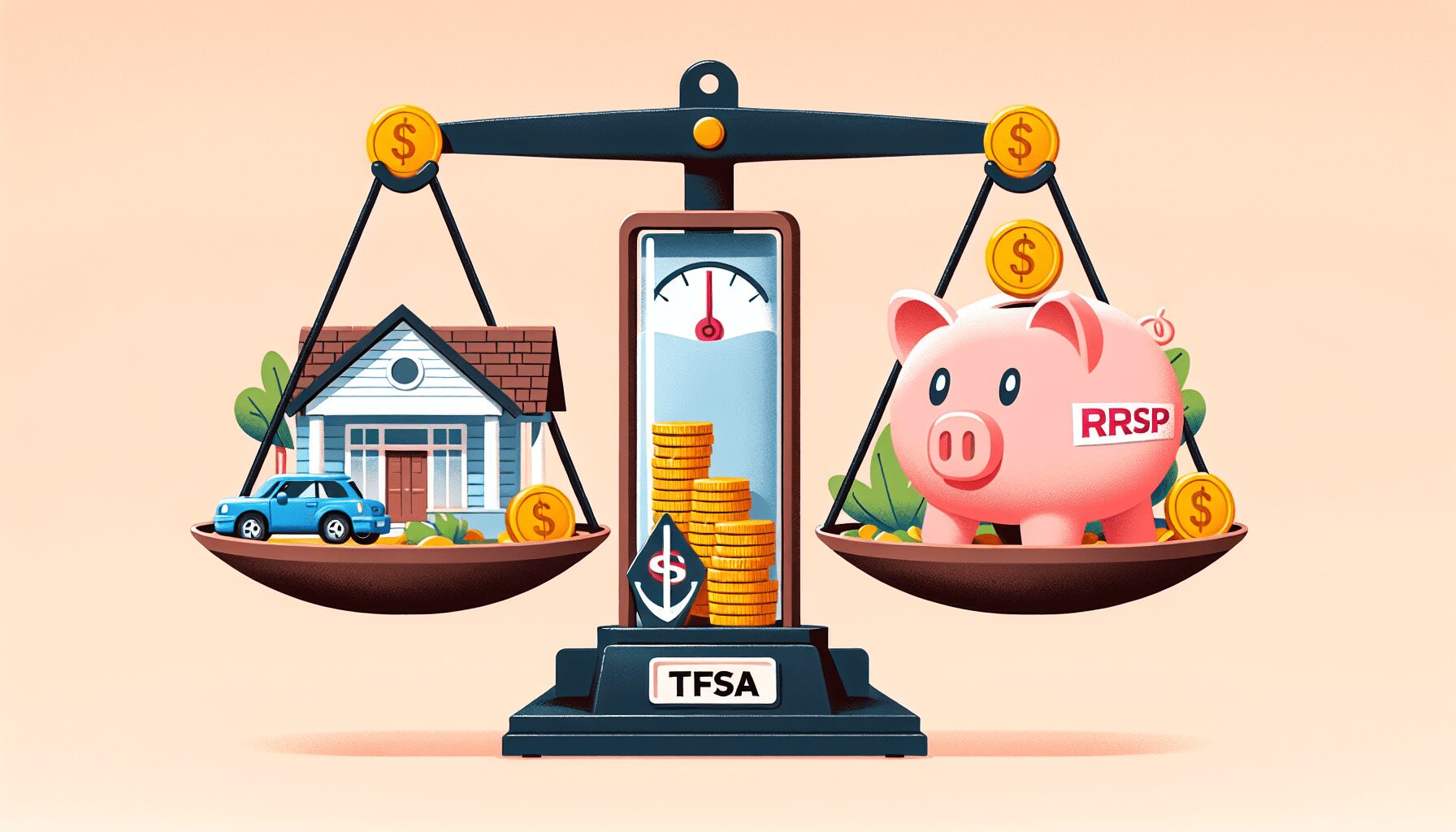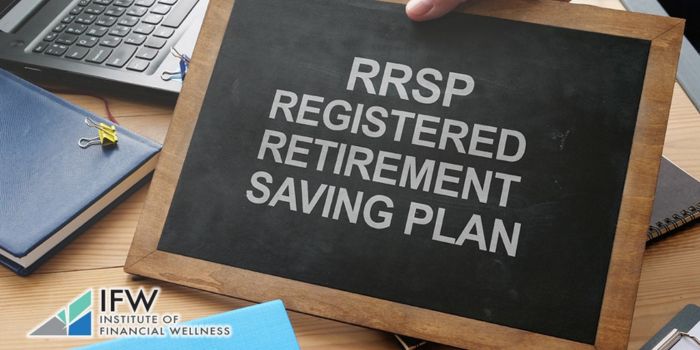“Do not save what is left after spending, but spend what is left after saving.” – Warren Buffett
As we navigate through the maze of life, one thing becomes clear – the importance of planning for our golden years. Registered Retirement Savings Plans (RRSPs) play a significant role in this journey, offering a tax-advantaged vehicle to save for retirement. But how well do you understand RRSPs and their intricacies? Let’s embark on a journey to unravel the complexities of RRSPs, from their tax benefits to the potential pitfalls, and arm ourselves with the knowledge to secure our future with RRSPs.
Key Takeaways
- Explore the specialized savings plan designed to help save for retirement through tax advantages and benefits.
- Understand annual contribution limits, investment options, withdrawal strategies, and taxes associated with RRSPs.
- Utilize resources such as educational materials, workshops, and financial planning services to make informed decisions about your RRSP investments.
Exploring the Essentials of a Registered Retirement Savings Plan (RRSP)
An RRSP is a retirement savings plan tailored to offer Canadians tax benefits for their retirement funds. It’s like your own personal safe haven, as the money put in grows both now and later with incredible income-tax deductions.
You can make contributions that get deducted from your yearly revenue straight away while also enjoying great deferred taxes, so you don’t have to worry about them until withdrawal time, allowing those precious savings of yours to grow faster than they would otherwise! It makes sense why an RRSP has such fantastic advantages when aiming toward financial security upon entering one’s retirement life.
The Mechanics of RRSP Contributions
Maximizing your retirement savings requires understanding the fundamentals of RRSP contributions. Canada Revenue Agency (CRA) limits yearly amounts you can contribute to your RRSP, being either 18% of a person’s earned income in 2021 or CAD $29,210, whichever is lower. If somebody participates in a pension plan, their contribution limit will decrease and might reduce tax saving possibilities.
It’s great news that any unused amount from year-to-year can be rolled forward towards future years when it may not have been possible to fully take advantage initially. The CRA also enables those overcontributing by providing an additional buffer zone of up to two thousand dollars. Beyond this threshold, taxes become applicable on excess money put away for one’s golden years. Being aware of how much has already been contributed throughout different times should help keep control and prevent penalties due to too high payments annually.
Investment Choices Within Your RRSP

RRSPs give investors plenty of choices when it comes to tailoring their portfolios for various financial goals and levels of risk tolerance. Investing options include cash, Guaranteed Investment Certificates (GICs), bonds, mutual funds, and Exchange Traded Funds (ETFs). Each has different risks and potential returns associated with them. By diversifying across different asset classes, you can better balance your risk exposure against expected gains. Bonds are considered a safer investment option due to regular income coming through interest payments, though this must be considered taxable within the RRSP framework.
Maximizing Your RRSP: Understanding Contribution Limits
Optimizing RRSP contributions means understanding the annual contribution limits. For 2023, you can contribute up to $30,780 or 18% of your 2022 earned income (whichever amount is less), but that takes into account any unused contribution room from previous years and pension adjustments [1]. Earned income for an RRSP includes salary/wage-earned money as well as self-employment funds. Capital gains and dividend earnings are not considered in this equation.
By making maximum contributions each year with these calculations in mind, one will make use of tax deductions available while also getting a benefit on deferred growth taxation, which comes with having an RRSP portfolio. It’s important to be mindful when contributing so no penalties occur due to overstepping the allowed limit stated by law!
Tax Benefits and Considerations for RRSPs

When it comes to tax advantages, RRSPs have a lot going for them. Contributing to your RRSP will reduce the amount of taxable income you owe and likely result in a lower overall income tax bill or possibly even generate an additional refund. On top of that, all investment earnings generated within an RRSP are not taxed until they’re withdrawn – effectively making use of ‘tax deferral’, which lets retirement savings accumulate faster than if held outside such plans. This can provide great financial rewards over time due to compounding effects from taxation benefits realized by investments made inside these accounts.
The Different Flavors of RRSP Accounts
When it comes to retirement savings, there are different RRSP accounts that can help you reach your goals. Individuals looking for tax deductions on their contributions and more control over investment decisions might consider an individual or self-directed account, while a spousal plan offers the opportunity for income splitting during retirement. Group plans sponsored by employers may include payroll deductions as well as employer-matched contributions, which could reduce the overall tax burden. It is important to select an RRSP option that best fits your financial situation and needs in order to maximize your future savings potential.
Navigating RRSP Withdrawals and Taxes

Withdrawing from your RRSP can come with certain tax consequences [2]. You are able to do so at any age. All amounts taken out of the RRSP will be incorporated into one’s yearly income and then taxed according to their marginal tax rate. Although there are a few exceptions (such as for purchasing a first home or paying tuition fees), withdrawing funds does not add more contribution room to the following year’s return. Strategies like optimizing early withdrawals, using tax-exempt/tax-deferred methods, and splitting up one’s income have been known to help reduce taxes on money received through an RRSP withdrawal.
Transitioning from RRSP to RRIF
As you move towards retirement, shifting from saving to using your retirement savings is something that needs thought. This often involves converting an RRSP into a Registered Retirement Income Fund (RRIF). It’s a kind of account that produces regular revenue in retirement, and its funding comes from the money saved up in one’s RRSP.
Going through this transition includes picking out an investment institution, filing for the appropriate forms with regard to setting up an RRIF, and marking down beneficiaries. When conversion happens successfully, payments will be received regularly by retirees, and taxes will apply based on their marginal tax rate set at present. With wise planning, those looking forward to retirement can make sure they have secured enough income when living off their personal plans easily without hiccups or hassles involved.
Comparing RRSPs and Tax-Free Savings Accounts (TFSAs)

RRSPs and Tax-Free Savings Accounts (TFSAs) are two of the most well-known tax-advantaged accounts in Canada that differ significantly when it comes to taxation [3]. Contributions into a TFSA account allow an individual to grow their investments with no taxes on profits incurred from these deposits, while RRSP contributions lower taxable income for the year they were made due to being contributed pre-tax. Withdrawals from TFSAs also remain untaxed, while taking funds out of an RRSP is considered part of taxable income. Each has maximum contribution limits set by the government – $30,780 or 18% earned annual earnings, whichever is less, plus any existing unused allowance within a given financial year 2021/22 period for those wishing to put cash away through an RRSP compared with just one fixed figure available at $6,500 offered per person annually under TFSAs meaning either may provide a more suitable savings vehicle dependent upon personal objectives and economic circumstances respectively.
Strategies for Optimizing Your RRSP Savings
To optimize RRSP savings, income splitting through spousal contributions can be used to even out retirement income between spouses and reduce the overall tax load. Other tactics for maximizing such accounts include using all available tax deductions when adding funds, investing in a manner that yields optimal returns, and planning withdrawals strategically with an eye toward minimizing taxes owed.
When to Start and How Much to Save in an RRSP
Thanks to the impact of compounding, starting early with retirement savings is essential for having a secure financial future. How much you should save will depend on factors such as salary level, desired targets and other sources of income when retired. A recommended baseline recommendation stands at 10-15% of your overall earnings. Nevertheless, an appropriate amount may change depending upon individual circumstances.
Making Informed Investment Decisions in Your RRSP
An RRSP is more than just a savings account. It involves making well-informed investments. Your tolerance for risk and the types of investments you opt to include in your portfolio depend heavily on this factor. Diversifying how you allocate your funds across different asset classes can also contribute to minimizing potential risks while potentially increasing returns from an investment perspective. Other considerations that may play into deciding which options are best when investing through an RRSP would be looking at factors like contribution limits, available options, any tax benefits related to them, as well as costs associated with such products or services.
RRSPs for Major Life Events: Buying a Home or Funding Education
Retirement savings are not the only use of an RRSP. You can also utilize it for major life events like buying a home or paying for education. The Home Buyers’ Plan (HBP) allows you to pull up to $35,000 from your RRSP in order to cover the down payment of your first residence. Also offered is the Lifelong Learning Plan (LLP), which lets users take out funds that go towards their own schooling – this amount may reach as high as $10,000 yearly with no more than $20,000 overall being withdrawn under said program. Through these programs, utilizing one’s RRSP gives access to new ways through which financial aspirations may be achieved and realized.
Empowering Canadians: The Institute of Financial Wellness and Informed RRSP Decision-Making
The Institute of Financial Wellness is an important financial institution for Canadians who want to make educated decisions regarding their RRSPs and overall money matters. Our organization offers a variety of resources, such as seminars, educational materials, and personal finance consultations, so that you can increase your effectiveness when investing in your retirement funds. We also assist by providing knowledge on how savings plans affect tax policies. This ensures clients get the most from their contributions to RRSPs. All these services are easy to access through our website, allowing individuals to take steps towards securing financial wellness with confidence.
In addition, IFW’s Retirement Score revolutionary tool provides individuals with a comprehensive assessment of their retirement readiness. Similar to a credit score, understanding your Retirement Score is crucial for making informed decisions about your financial future. By integrating various factors such as investing, retirement income, tax analysis, and government benefits, this patent-pending tool offers a holistic view of your retirement preparedness. The Retirement Score empowers individuals to assess the probability of achieving their income goals during retirement, offering a reality check and guiding them on the path to a secure and comfortable retirement.
Full Summary
To sum it up, RRSPs are an effective way of planning for retirement. From being aware of the fundamentals and tax benefits to making astute investment decisions and dealing with withdrawals, we have explored every aspect associated with them. This detailed information can assist anyone- be it a beginner or someone already diligently setting aside money for their golden years, in utilizing this savings tool effectively so that they can lead comfortable lives after retiring.
Frequently Asked Questions
How does an RRSP work?
An RRSP provides tax-deferred growth by allowing you to defer taxes on your investment income until it’s withdrawn. Contributions are made with pre-tax money and grow tax-free until withdrawal when it is then taxed at the marginal rate.
Withdrawals are included in your taxable income, usually in retirement when you’re in a lower income-tax bracket.
Who is eligible for the RRSP?
All Canadian adults with a Social Insurance Number who receive earned income and submit a tax return can open up an RRSP. This eligibility stays in place until the year they reach 71 years old.
How much is RRSP per month?
The monthly limit for RRSP contributions in 2023 has been set at $2,565. To make it easier to plan your savings goals, you can split this amount into semi-monthly payments of up to $1,282 each.
What are 3 benefits of a RRSP?
Saving towards retirement can be a beneficial experience through the use of RRSPs, which provide tax-deferred growth and enable carryforward contribution room for future years. In effect, lowering overall taxes.
What is an RRSP, and why is it important?
RRSPs are an excellent way for Canadians to save for retirement; they offer tax advantages and benefits which make saving even easier.




